You must be logged in to post a review.
Citizen in Paris – 1794
€68.00
Figure to assemble and paint
Ref.: 9 – NAP
Weight: 230 grs.
Material: White Metal
Number of Pieces: 10
Historical Review:
Few figures in history have deserved such extensive and passionate treatment as the man who, as First Consul and Emperor of France (1799-1804 and 1804-1814), ruled the destinies of Europe for three lustrums: Napoleon Bonaparte. An undisputed military genius and statesman capable of building an empire according to French standards, Bonaparte was, for his admirers, the providential man who established the great achievements of the French Revolution (1789-1799), providing his country with solid and stable power structures that put an end to the previous political chaos.
The keys to Napoleon’s rapid rise to power lay in two fundamental pillars: his undeniable military genius and his ability to base a system of government on principles commonly accepted by the majority of the French. Bonaparte was first and foremost a strategist, whose methods revolutionised the military art and laid the foundations for the great mass mobilisations characteristic of modern warfare. Based on a novel organisation of units and a set of principles (concentration of forces to break enemy lines, mobility and speed) that would be punctually executed in accordance with tactical manoeuvres planned and ordered by Napoleon himself, his armies became invincible war machines, capable of dominating Europe and raising France to its greatest glory
In addition to the obvious link between military successes and popular admiration, the consolidation of Napoleonic power was also due to the fact that its main protagonist was able to capture the desires of a society which, like the French, felt exhausted after the anarchy and disorder that had characterised the political direction of the state during the revolutionary decade (1789-1799). In the service of the Directory, the Corsican general had won brilliant victories in his campaigns against the European absolute monarchies, allied against France in an attempt to put an end to the Revolution. When, under the protection of his immense prestige, Napoleon staged the coup de Brumaire and established first the Consulate (1799-1804) and then the Empire (1804-1814), autocratic regimes which he headed as First Consul and Emperor, he found widespread support in the most diverse sectors of society, clearly demonstrated by the overwhelming results of the plebiscites that were called for his ratification.
After his time at the military school in Brienne, he was commissioned as a second lieutenant of artillery at the age of 17. When his father died, he had to move to his native Corsica, on temporary leave from the army. His turbulent youth was spent in and out of France, with new cantonments with the troops (this time in Auxonne), the maelstrom of the French Revolution (whose violent explosions he experienced during a stay in Paris) and the independence conflicts in Corsica. He stayed with his family in Marseille in dire financial straits, from which he began to escape with the help of a brother of Robespierre’s, Augustin, who offered him protection. Napoleon, thanks to this, managed to rejoin the ranks as a captain and made a name for himself during the siege of the naval base at Toulon (1793), where he managed to put down a counter-revolutionary uprising supported by the English.
In recognition of his merits, he was promoted to brigadier general, was assigned to the general command of artillery in the Italian army and travelled on a special mission to Genoa. These contacts with Robespierre nearly proved fatal when the Jacobin Terror fell on 27 July 1794. Napoleon was imprisoned for a time in the fortress of Antibes, while his suspected affiliation was being elucidated. Released through the mediation of another Corsican, the commissar of the Convention, Salicetti, the young Napoleon, aged twenty-four and with neither trade nor profit, started again in Paris, as if starting from scratch. However, he soon found a place in the topographical section of the Operations Department. In addition to the strictly technical tasks, carried out amidst maps, reports and military secrets, this office allowed him to deal directly with the high civilian authorities who supervised it. In this capacity he remained in Paris as a civilian until 1795.
The figure is dressed in the shabby costume of a civilian citizen. He wears a tricorn, frock coat and riding boots. He rides a very ungainly horse.

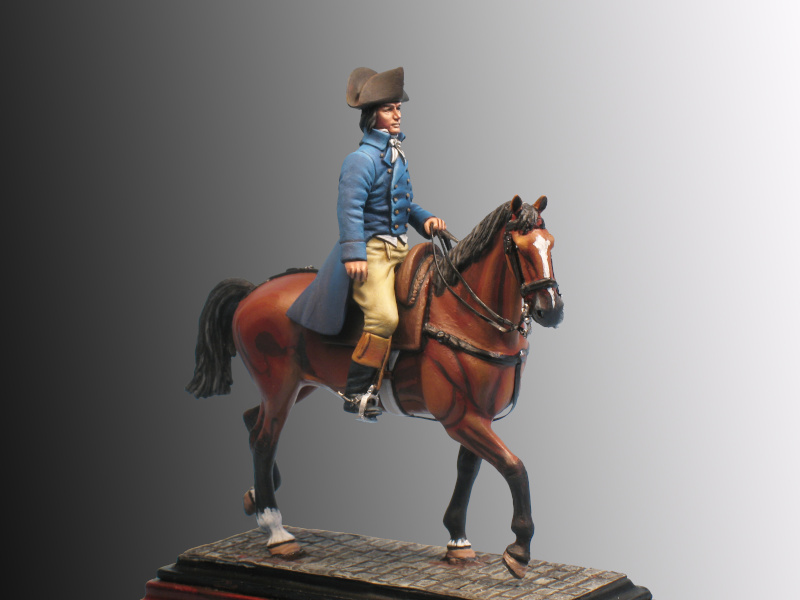
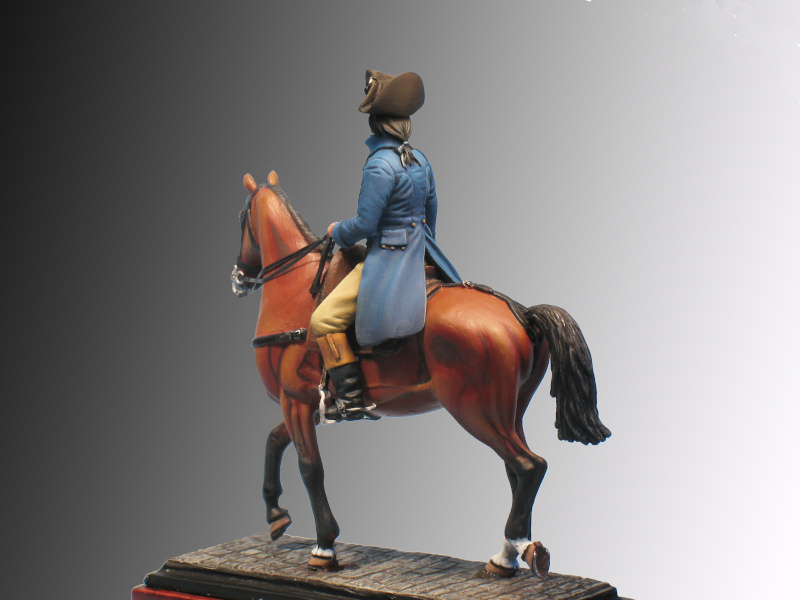


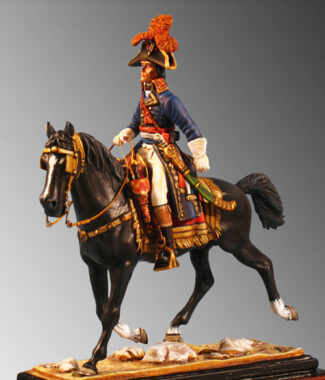
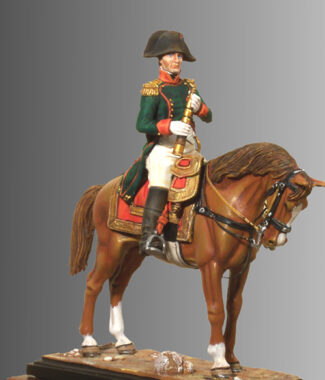
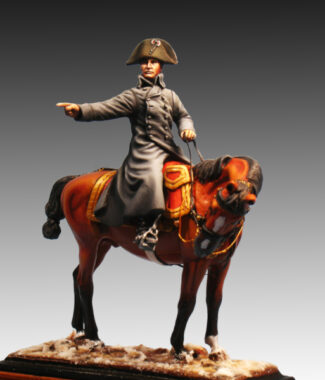
Reviews
There are no reviews yet.